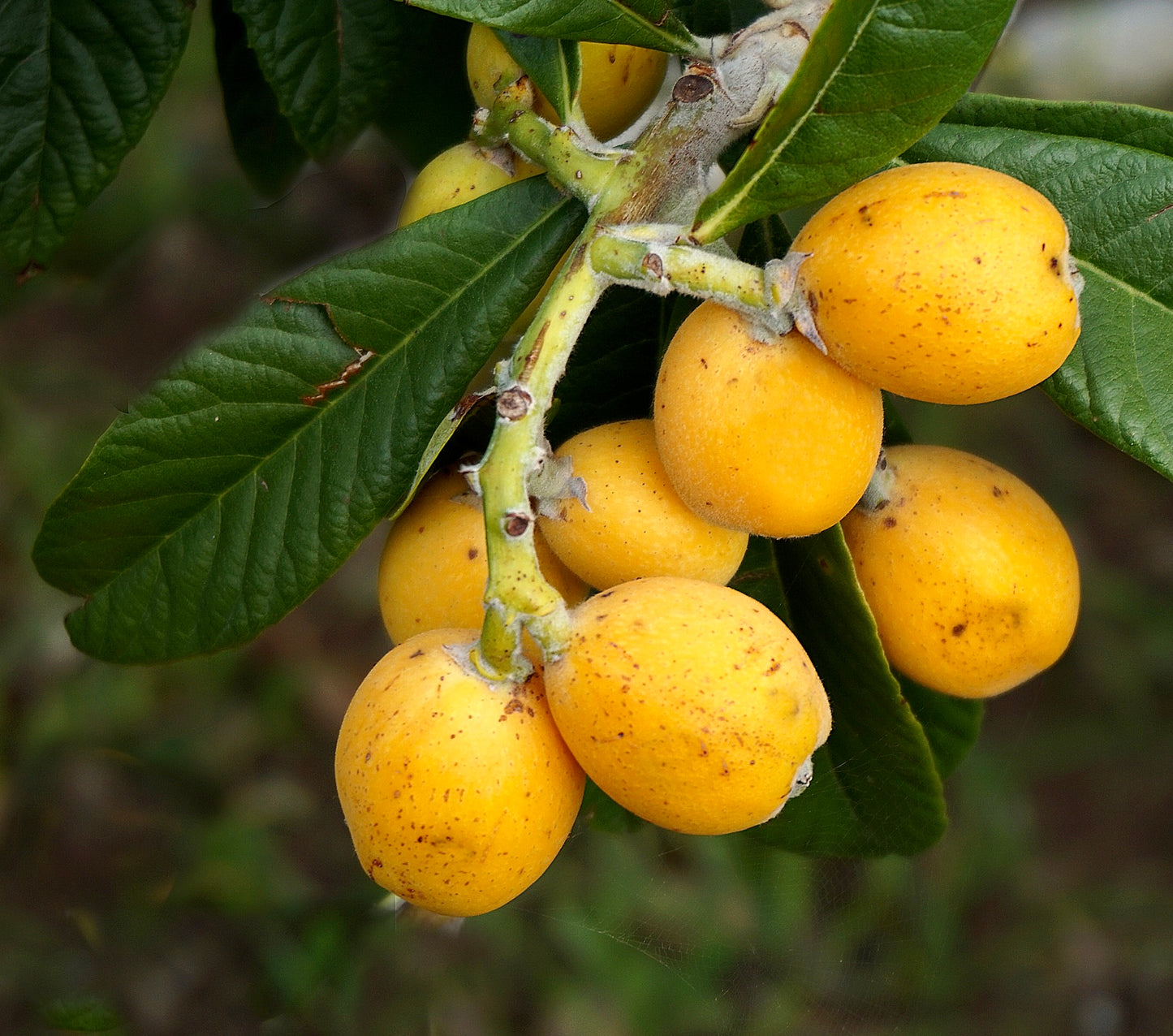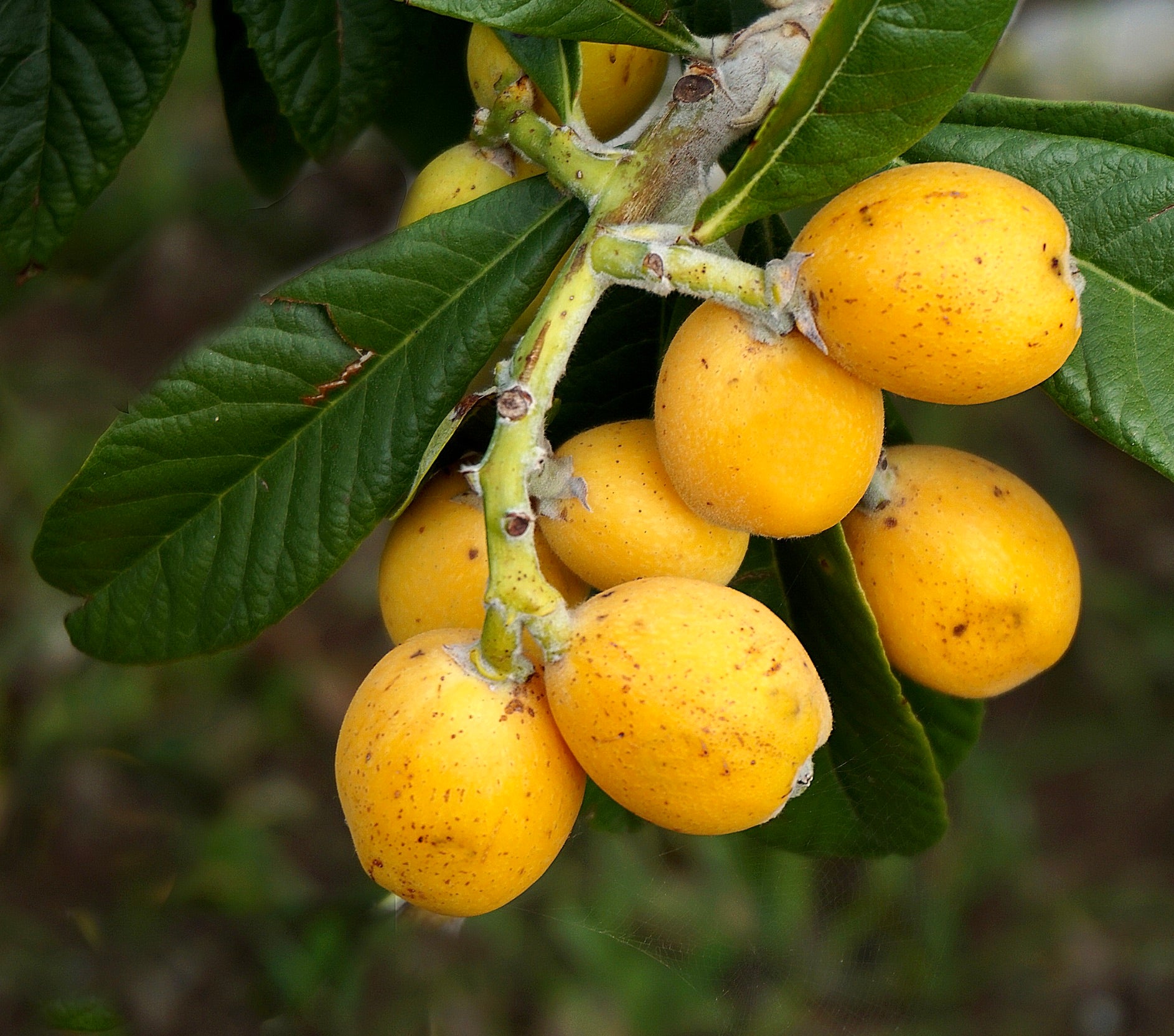Eriobotrya japonica 70-90cm
Eriobotrya japonica 70-90cm
Couldn't load pickup availability
Product Description
Eriobotrya japonica, commonly known as the Loquat tree, is a beautiful and versatile evergreen tree native to Southeastern China. This tree is cherished not only for its attractive appearance but also for its sweet and tangy, apricot-sized fruits. Loquat trees feature glossy, dark green leaves, and in late winter to early spring, they produce fragrant clusters of small, white flowers, followed by the development of the delicious, yellow to orange fruits. Beyond its edible bounty, the Loquat tree makes an excellent ornamental addition to gardens, with its lush foliage and picturesque appearance.
Cultivation:
-
Climate: Loquat trees thrive in subtropical to mild temperate climates. They can withstand light frost but prefer regions with warm winters and hot, humid summers.
-
Sunlight: Plant your Loquat tree in a location that receives full sun to partial shade. It requires at least 6 hours of direct sunlight daily for optimal growth and fruit production.
-
Soil: Provide well-draining, loamy soil with a slightly acidic to neutral pH (around 6.0-7.5). Good drainage is essential to prevent root rot.
-
Planting: Plant Loquat trees in the early spring or late autumn. Dig a hole that is as deep and wide as the root ball, and position the tree at the same level it was growing in the nursery container. Allow enough space between trees, typically 15-20 feet apart, to accommodate their mature size.
-
Watering: Water newly planted Loquat trees regularly to help establish their root system. Once established, water deeply and infrequently, allowing the soil to dry slightly between waterings. Avoid waterlogged conditions.
-
Mulching: Apply a layer of organic mulch, such as compost or wood chips, around the base of the tree to conserve moisture, regulate soil temperature, and prevent weed growth.
-
Fertilization: Fertilize Loquat trees sparingly in the spring with a balanced, slow-release fertilizer. Over-fertilization can lead to excessive vegetative growth at the expense of fruit production.
-
Pruning: Prune your Loquat tree as needed to maintain its shape and remove dead or crowded branches. Pruning is best done after fruiting to avoid interfering with fruit production.
-
Pest and Disease Control: Loquat trees are generally hardy but can be susceptible to aphids, scale insects, and fungal diseases. Regularly inspect your tree and take appropriate measures to control pests and diseases if necessary.
-
Harvesting: Loquat fruits are typically ready for harvest in late spring to early summer when they turn from green to yellow or orange and feel slightly soft to the touch. Gently twist or cut the fruits from the tree.
Eriobotrya japonica, the Loquat tree, offers both ornamental beauty and delicious, sweet-tasting fruits. By providing the right growing conditions and care, you can enjoy the bounty of this versatile tree in your garden while enhancing its overall aesthetic appeal.
IMPORTANT: Please be aware that picture 1 show adult plant not for sale, the offer is for a plant in the dimension indicated in title description.
Please be aware that most plants change across seasons. For example, some of them will naturally lose leaves or change in colour during colder months. Do not hesitate to contact us for further informations about the plants of your interest.
Cultivation
Cultivation
Info and Disclaimers
Info and Disclaimers
Plant height: 70-90cm
Pot diameter:
Picture taken on:


